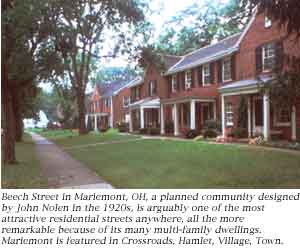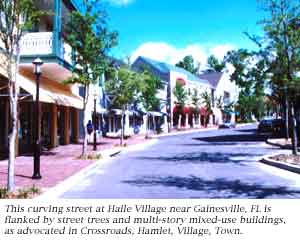 Critical Praise for
Critical Praise for
 Critical Praise for
Critical Praise for
"This is a great piece of work. The author has done a masterful job with this very useful 'how to' guide that will find a large audience."
--Joseph Molinaro, National Association of Home Builders
"Your book provides an excellent contribution. As far as I know, no one has written such a comprehensive book in the past few decades about aesthetics and site design -- and yet it seems so necessary, especially given what development looks like these days."
-Judy Corbett, Local Government Commission, Sacramento, CA
"This book provides a comprehensive examination of the physical layout of communities and the relationship of homes to streets, parks, footpaths, and bikeways. Approximately 80 communities in 29 states are singled out as models of livable neighborhoods containing open spaces 'that are more than just unbuildable land, plus an obligatory green or ballfield.' Detailed design standards, based on traditional neighborhood models, ensure that increased densities would resemble the best elements of historic communities in the area, rather than simply being groups of rowhouses flanking central parking lots, as is typically the case in suburbia."
--Review in New England Planning (APA Chapter)
"In his generously illustrated book, Randall Arendt recommends illustrated design principles as a means of articulating and designing traditional neighborhoods. With disdain for the forced geometry of grid-like street patterns, he advocates a form and pattern of streets that evolve from the natural landscape. For the municipal official that needs the inspiration to undo the ugly, dysfunctional results of the last 50 years of conventional suburban development, this book will lead you down the right path."
--Thomas Comitta, in New Urban News
"Crossroads, Hamlet...brings to light the benefits of good planning within the context of traditional neighborhood design. Arendt displays sensitivity toward the human scale and proportion in neighborhood design, and offers built examples of villages and neighborhoods that are in harmony with their natural environment. However, before any of this type of innovative subdivision design can take place, someone needs to write the ordinance revisions that make conservation-based traditional neighborhood development permissible. Never fear, however, for Arendt has done this for us too. Part III is a model village design ordinance and may well be the most valuable chapter. A town or county could easily adopt the ordinance with only minor modifications."
--Matthew L. Butrill, in Land Development
"Crossroads, Hamlet… provides me with the much-needed language and pictures to convey the beauty and overlap found in the principles of Conservation Design and New Urbanism. With huge appreciation for that…"
--Ralda Leroux, Comox Valley Regional District, British Columbia
